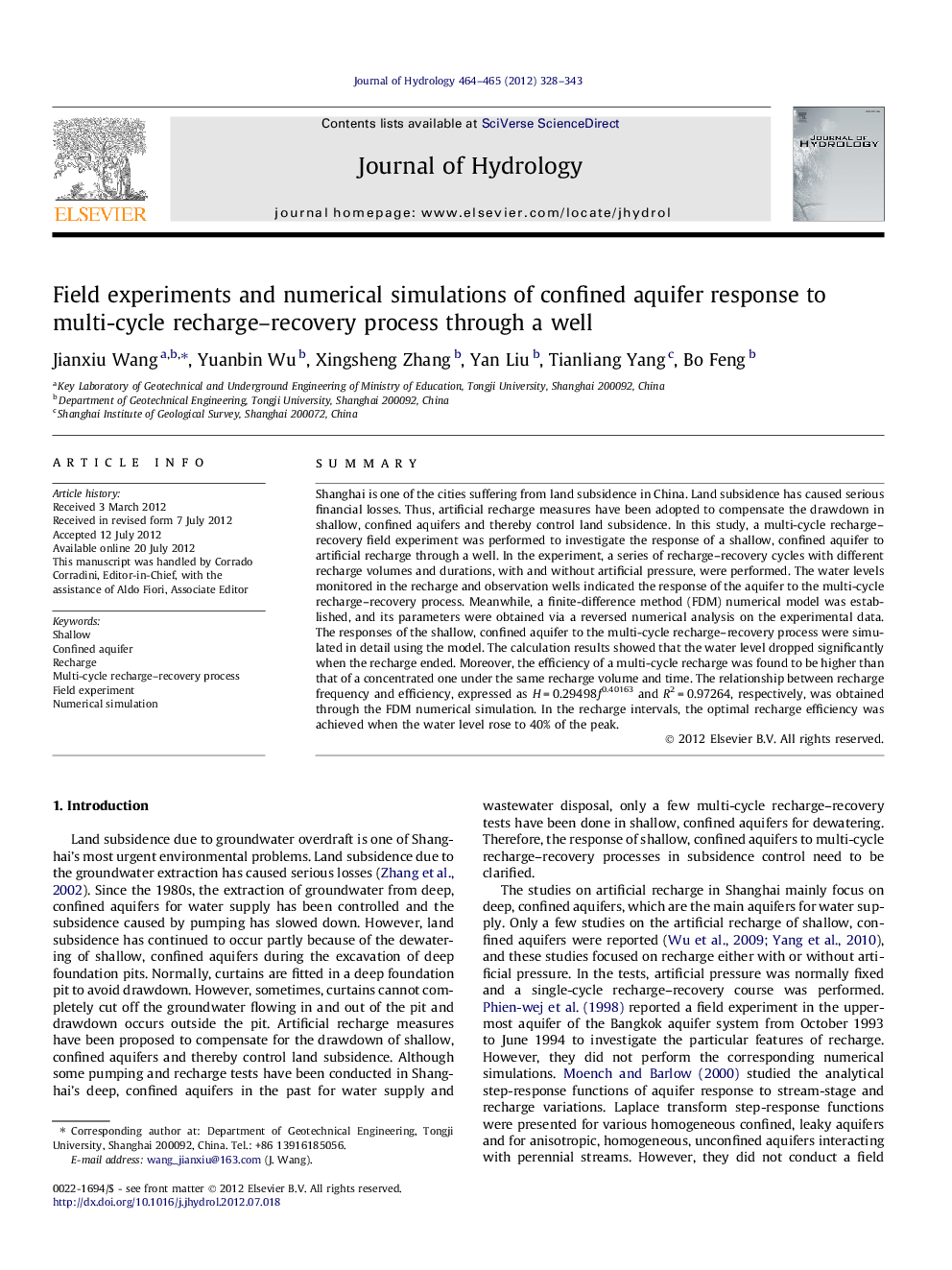| Article ID | Journal | Published Year | Pages | File Type |
|---|---|---|---|---|
| 6413889 | Journal of Hydrology | 2012 | 16 Pages |
SummaryShanghai is one of the cities suffering from land subsidence in China. Land subsidence has caused serious financial losses. Thus, artificial recharge measures have been adopted to compensate the drawdown in shallow, confined aquifers and thereby control land subsidence. In this study, a multi-cycle recharge-recovery field experiment was performed to investigate the response of a shallow, confined aquifer to artificial recharge through a well. In the experiment, a series of recharge-recovery cycles with different recharge volumes and durations, with and without artificial pressure, were performed. The water levels monitored in the recharge and observation wells indicated the response of the aquifer to the multi-cycle recharge-recovery process. Meanwhile, a finite-difference method (FDM) numerical model was established, and its parameters were obtained via a reversed numerical analysis on the experimental data. The responses of the shallow, confined aquifer to the multi-cycle recharge-recovery process were simulated in detail using the model. The calculation results showed that the water level dropped significantly when the recharge ended. Moreover, the efficiency of a multi-cycle recharge was found to be higher than that of a concentrated one under the same recharge volume and time. The relationship between recharge frequency and efficiency, expressed as HÂ =Â 0.29498Â f0.40163 and R2Â =Â 0.97264, respectively, was obtained through the FDM numerical simulation. In the recharge intervals, the optimal recharge efficiency was achieved when the water level rose to 40% of the peak.
⺠We perform a multi-cycle recharge-recovery field experiment in a confined aquifer. ⺠We establish a numerical model via a reversed analysis on the experimental data. ⺠The piezometric heads declined significantly when the recharge ended. ⺠The efficiency of a multi-cycle recharge was higher than a concentrated one. ⺠The recharge interval was the best when the water level rose to 40% of the peak.
